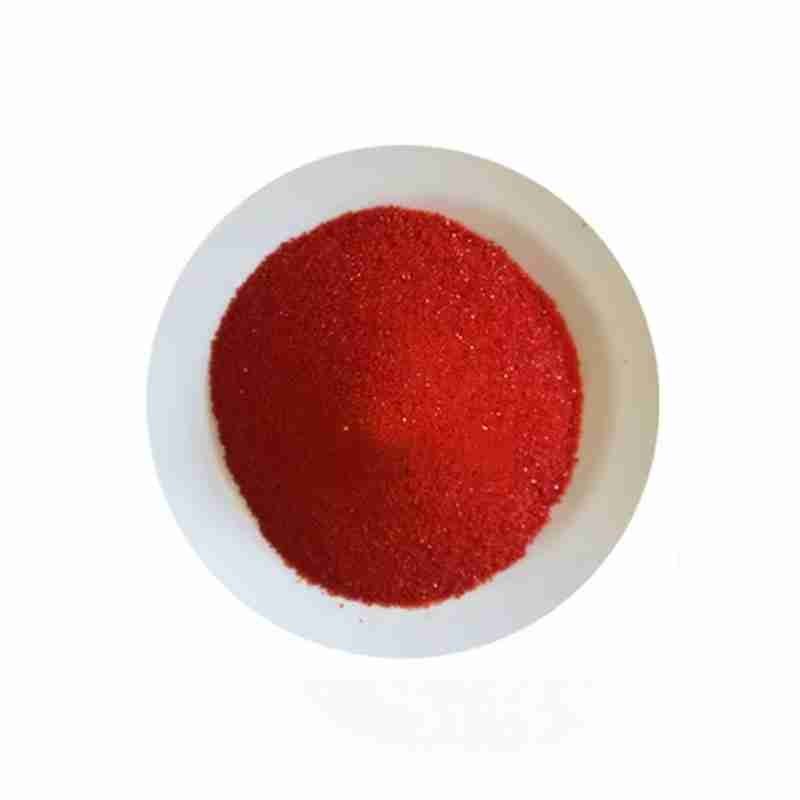Iron Hydroxide Oxide CAS #20344-49-4
Iron oxides, including iron hydroxides and hydrated oxides, are natural minerals and geocatalysts that are abundant in the earth??s crust. Because the chemical properties of iron are very reactive, there are many secondary iron minerals, such as maghemite (??-Fe2O3), hematite (??-Fe2O3), lepidocrocite (??-FeOOH), goethite ( ??-FeOOH), hydrated iron (III) oxide (Fe5HO8??4H2O) and magnetite (Fe3O4) exist in large amounts as suspended matter in the water system. Iron oxides play a very important role in various chemical and biological processes involving the transformation of organic compounds in aquatic ecosystems.
Hydrated iron (III) oxide refers to a natural nanoscale iron hydroxide mineral commonly found in the natural environment (soil, water sediments, etc.), and can also be easily synthesized in the laboratory. Hydrated iron(III) oxide is difficult to characterize due to its small size and low crystallinity.
发送询盘
Iron Hydroxide Oxide CAS #20344-49-4
| Iron hydroxide oxide Basic information |
| Product Name: | Iron hydroxide oxide |
| Synonyms: | Ferric oxide hydroxide;Ferrous acid;Iron monohydroxide monooxide;Iron(III) hydroxide, ^y-phase;Iron(III) hydroxide, ^a-phase;Iron(III) hydroxide, gamma-phase;Iron(III)oxide,Ferric hydroxide oxide;Goethite,Ferric hydroxide oxide, Iron(III)oxide |
| CAS: | 20344-49-4 |
| MF: | FeHO2 |
| MW: | 88.85 |
| EINECS: | 243-746-4 |
| Product Categories: | Metal and Ceramic Science;Oxides;Inorganics |
| Mol File: | 20344-49-4.mol |
 |
|
| Iron hydroxide oxide Chemical Properties |
| Melting point | 135??C |
| density | 3.4-3.9 |
| RTECS | NO7400000 |
| solubility | DMSO (Sparingly), Methanol (Slightly), Water (Soluble) |
| form | crystalline |
| color | Red-brown |
| Water Solubility | Soluble in mineral acids. Insoluble in water and ethanol. |
| Merck | 14,4025 |
| Exposure limits | ACGIH: TWA 1 mg/m3 NIOSH: TWA 1 mg/m3 |
| Stability: | Stable. |
| CAS DataBase Reference | 20344-49-4(CAS DataBase Reference) |
| NIST Chemistry Reference | iron(III) oxide hydroxide(20344-49-4) |
| EPA Substance Registry System | Iron hydroxide oxide (Fe(OH)O) (20344-49-4) |
- 2
- 2-diallylpent-4-en-1-amine
- 4
- 95-16-9
- Ammonium sulfamate
- Benzothiazole
- cas:67889-00-3ح2
- cas:83524-75-8 | pigment black 32
- cas:928836-00-4 | 2
- cas:932745-70-5 | 4
- Chemical Minerals
- Coconut diethanolamide
- Daily Chemicals
- discount
- for sale
- General pvc resin
- hexyl D-glucoside
- in stock
- Lauramidopropyl betaine
- LAURIC ACID MONOETHANOLAMIDE
- Petroleum Additives
- Plasticiser
- Ploymers
- price
- PVC
- quotation
- Raw Materal
- Remove term: Petroleum Additives Petroleum Additive
- SODIUM ETHYL 2-SULFOLAURATE
Related Products
Ammonium sulfamate is a white crystalline compound with the chemical formula (NH4)2SO3. It is a versatile chemical used in various applications, including as a flame retardant, a fertilizer ingredient, and a chemical intermediate. In the agricultural sector, it serves as a source of nitrogen, promoting plant growth. As a flame retardant, it is effective in reducing the flammability of materials. Additionally, it is used in the synthesis of other chemicals due to its reactivity with amines and other organic compounds. Its properties make it a valuable component in a range of industrial processes.
Aluminum chlorohydrate is an inorganic compound often used as a coagulant in water treatment processes. It is also known for its astringent properties and is utilized in various personal care products, such as antiperspirants and deodorants, due to its ability to temporarily close sweat glands. It enhances the viscosity and stability of formulations, making it a valuable ingredient in cosmetics and pharmaceuticals.
Copper(II) sulfate, with the chemical formula CuSO4, is a blue crystalline compound that is soluble in water. It is commonly used in agriculture as a fungicide and in the textile industry as a dye fixative. Copper(II) sulfate is also utilized in the manufacture of pigments, batteries, and as an algaecide in water treatment. Its distinctive blue color and reactivity make it a versatile chemical in various industrial applications, including chemical analysis and electroplating.
Product name:HYDROXYPROPYL GUAR HYDROXYPROPYLTRIMONIUM CHLORIDE
Purity:99%
Appearance:Light Yellow Powder
Package:Customized according to customer needs.
Sample:Available
Carbon black, also known as carbon dark, is a kind of unformed carbon. It??s a light, loose and extremely fine black greasepaint with a veritably large face area ranging from 10 to 3000m2/g. It??s an deficient combustion of carbonaceous substances( coal, natural gas, heavy oil painting, energy oil painting,etc.) under conditions of inadequate air. Or products deduced from thermal corruption. Those made from natural gas are called?? gas dark??, those made from oil painting are called?? beacon black??, and those made from acetylene are called?? acetylene black??. In addition, there are?? trough black?? and?? furnace black??.
Chemical Name: UV-120
Other Name: (2’,4’-Di-tert-butylphenyl 3,5-di-tert-butyl-4-hydroxybenzoate)
CAS No.: 4221-80-1
Molecular Fomula: C29H42O3
Molecular weight: 438.66
Assay: ≥99%(LC)
Chemical Name: Zinc citrate
Synonyms: Zinc citrate trihydrate
CAS No.: 546-46-3
Molecular Formula: C6H8O7Zn
Molecular Weight: 257.5
Appearance: White powder
Chemical Name: Ashwagandha Extract
Synonyms: Withania somnifera, ext.; Withania Somnefera Extract
CAS: 90147-43-6
Appearance: Brown
Chemical Name: STODDARD SOLVENT
CAS No.: 64742-88-7
Appearance: Colorless or Light Yellow Liquid
Chemical Name: Dehydrocholic acid
Synonyms: Acide dehydrocholique; Triketocholanic acid
CAS No.: 81-23-2
Molecular Formula: C24H34O5
Molecular Weight: 402.53
Appearance: Powder
Chemical Name: 1,1,2,2-Tetrachloroethane
Other Name: Tetrachlorethane
CAS No.: 79-34-5
Molecular Formula: C2H2Cl4
Molecular Weight: 167.85
Appearance: Liquid
Carbon is a fundamental element found in all organic life and a key component of many inorganic materials. It is known for its ability to form long chains and complex structures, which makes it the basis of various compounds, including diamond, graphite, and fullerenes. Carbon is used in a wide range of applications, from manufacturing steel and other alloys to being a key element in batteries and as a pigment in inks and paints.


















